I first heard about the idea for Michael Hagedorn’s recent book, Bonsai Heresy, over ten years ago. Hagedorn explained that he had started collecting, and debunking, unproductive myths in the bonsai world. I couldn’t wait to read it!
Finally, I got the chance when I saw drafts of the book earlier this year. The experience led to fun conversations with Hagedorn about bonsai soil, fertilizing, and decandling black pines, among other topics.
It wasn’t until last month that I read the published version ahead of an interview with Hagedorn for the Bonsai Wire Podcast. In short, I was super impressed.
Bonsai Heresy: 56 Myths Exposed Using Science & Tradition is the first book that helps us move away from beginning ideas about bonsai and move toward intermediate and advanced ways of thinking about our trees.
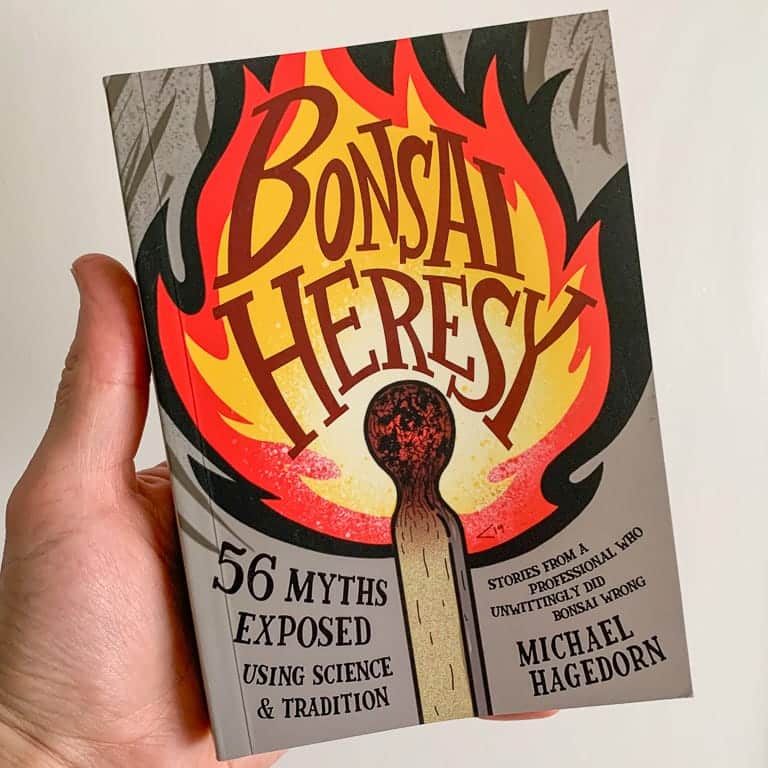
Bonsai Heresy: 56 Myths Exposed Using Science & Tradition
The book does this by investigating commonly held beliefs in the bonsai world and showing how they stand up against what we’ve learned from science and the bonsai tradition.
The opening chapter sets the tone with “Bonsai methods should be exclusively based on science.” The idea sounds good at first, but very little scrutiny is required to debunk this one.
A selection of subsequent chapter titles suggests the scope of the 345 page book:
“Use a bigger pot to grow a bigger tree”
“Constantly pinch junipers”
“Stop fertilizing in the summer”
“Never let wire bite in”
In addition to providing the source of selected myths and enlightened alternatives to them, Hagedorn includes resources that make the book a helpful reference guide.
The best examples of this are the three chapters that focus on bonsai dormancy. After dispelling the notion that zone hardiness is a safe measure for how much cold a tree can handle in winter, Hagedorn provides research showing that root hardiness doesn’t always align with top hardiness.
Toward this end, Chapter 13 lists the root hardiness and top hardiness of 70 different species. The data makes it clear that taking a conservative approach to overwintering bonsai is the right way to go.
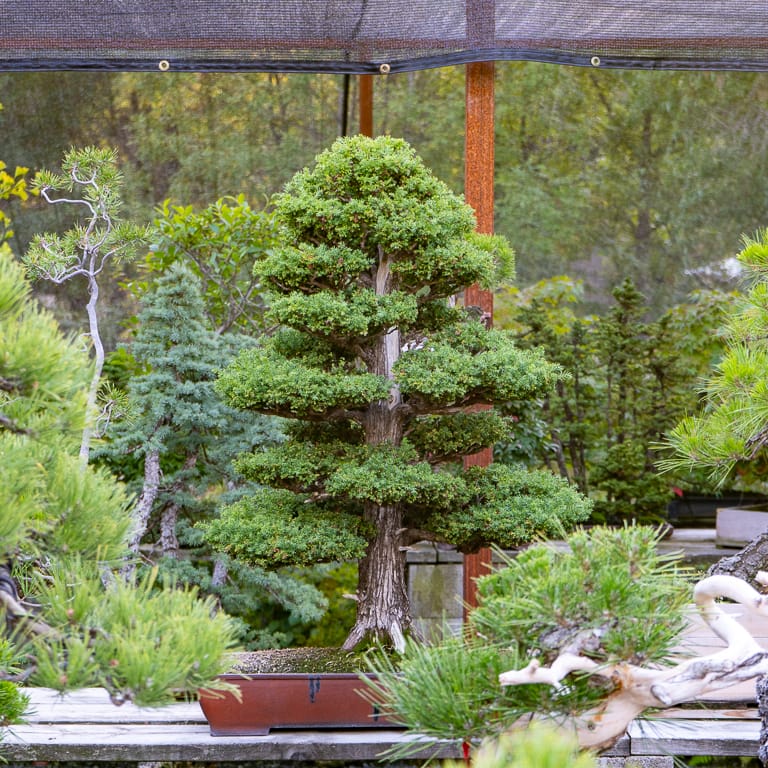
Cryptomeria in Hagedorn’s garden
In a conscious move to keep readers focused on the ideas in the book, Hagedorn uses no photographs to make his points. Instead, Bonsai Heresy relies on playful and outlandish images created by Sergio Cuan. In addition to being a talented bonsai practitioner and teacher, Cuan is an outstanding illustrator whose images provide spark and humor.
Speaking of humor, Heresy has plenty of it. Anyone familiar with Hagedorn’s blog or his first book, Post-Dated: the Schooling of an Irreverent Bonsai Monk (see the review here), will recognize the reliance on anecdotes, often self-deprecating in nature, that instruct and entertain.
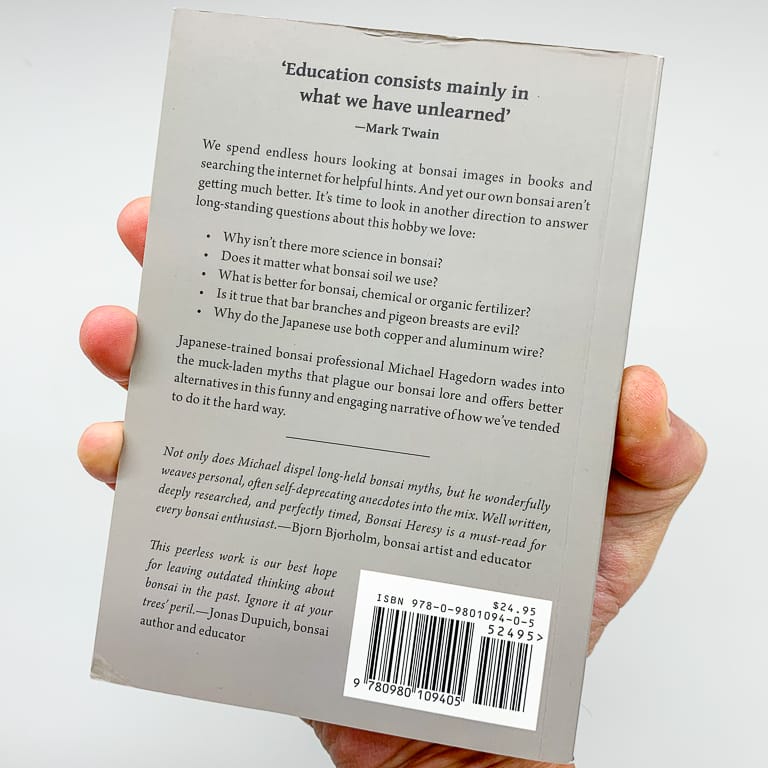
Back cover
If you haven’t noticed, I’m clearly biased in favor of this book. I’ve been friends with Michael for twenty years and I think highly of his work as a bonsai professional, as a teacher, and as a writer.
To counter this bias, I welcome you all to add your impressions of the book in the comments below.
For those of you who have not yet read it and want to learn more, the book is available from Stone Lantern Publishing at the following link:
Bonsai Heresy: 56 Myths Exposed Using Science & Tradition
Pre-Bonsai Sale This Weekend
An assortment of pines, azaleas, and sekka hinoki, among other species, will be available today, tomorrow, and Sunday (11/13-15) at Encinal Nursery in Alameda, California.
Most trees will be in the 15 to 150 dollar range with a few specimen trees mixed in. Here’s a sneak peak.
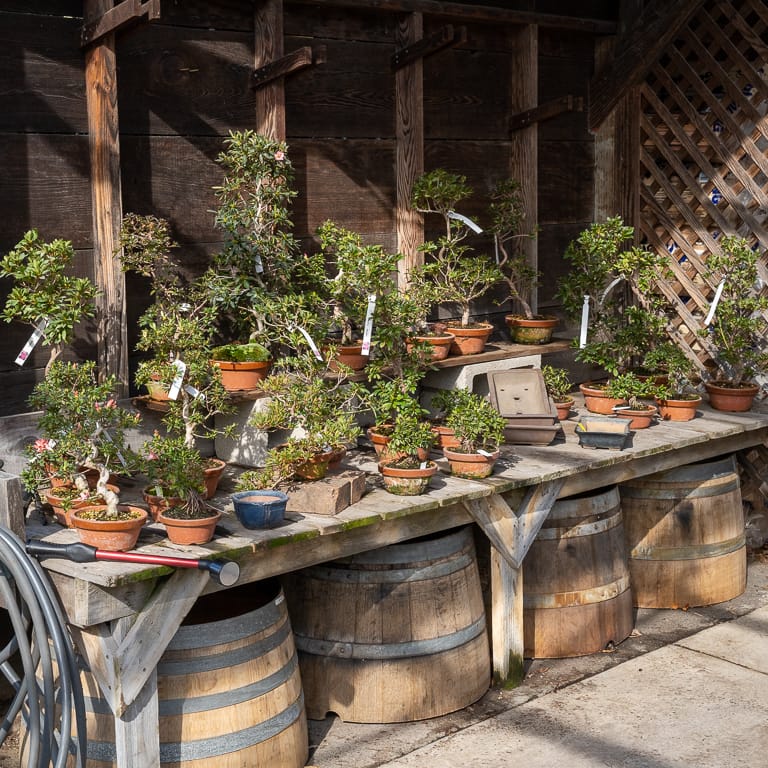
Satsuki azaleas
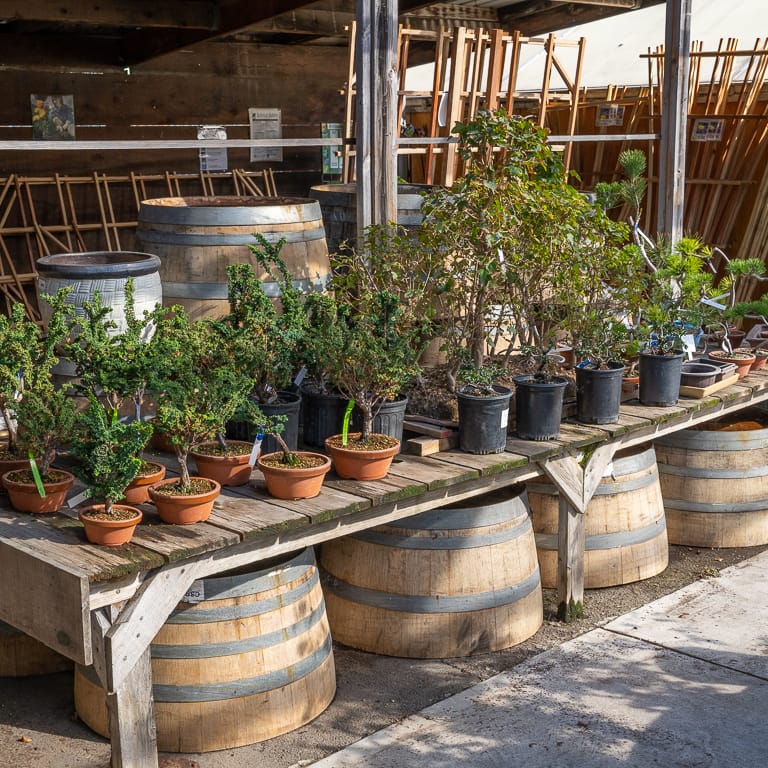
Sekka hinoki and assorted deciduous bonsai

Black and red pines
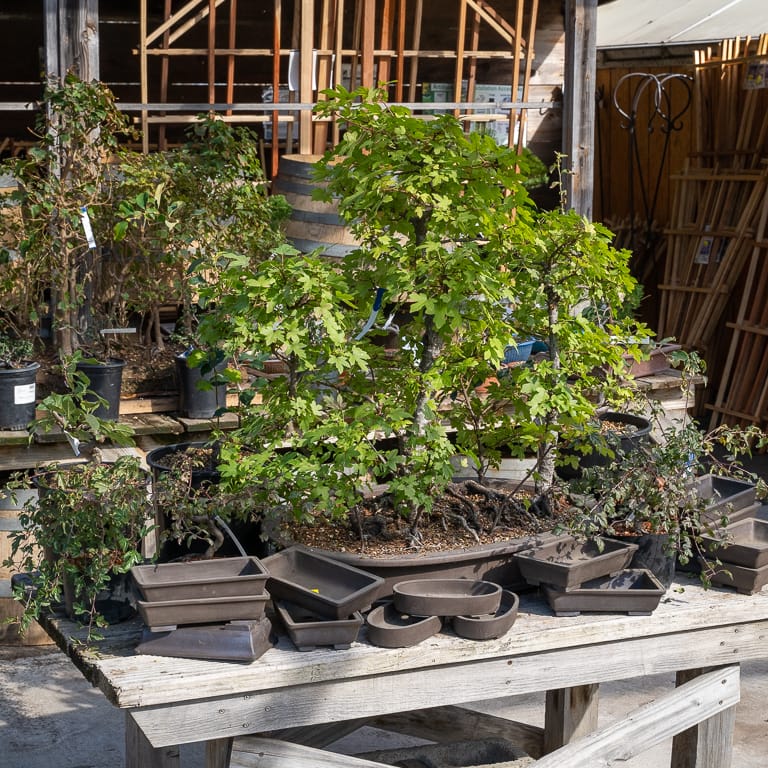
Liquidambar and crabapple
Subscribe to Bonsai Tonight
New Posts Delivered Every Tuesday and Friday
Steve Hale says
I bought the book having watched Michael’s work online for some time and respecting what he does. Being in the UK the postage bumped the price but worth every penny! The explanations are easy to follow and understand being written in Michael’s laid back style. The thought process behind each statement based on both sound research and experience. The entire book is very thought provoking and I was actually disappointed when i reached the end, so much so that I ordered his first book! A ‘must have’ for the Christmas stocking.
Charles Mosse says
Excellent book. Great timing too with so many people getting into bonsai. The info will give them better guidance than ever before. Clears up so many iffy facts circulating about. Bought one for me and one to give away to a club member when it first came out. Have recommended the book to many, and those that have bought it, like it.
Ann says
It was like a light bulb popping on! All of a sudden some things made so much more sense, and things I’d been doing for years but not really understanding or feeling slightly uncomfortable about I can now legitimately stop doing.
Jules says
I’m so glad a book like this even exists. As one of the youngest member of our club I of course have to listen to “the elders”, which I do, but sometimes it also doesn’t make sense. But having been raised in a science environment, I need to understand something before I can really start working or using it, whether it be a tree, a technique, a response to an action taken.
Thats the part that I just didn’t know and have. This books answers a lot of those questions.
Now, after reading it twice, every now and then I can at least try to debunk some of myths that go around but that is not always welcomed with open arms. Now I’m “the disrepectful one” all of a sudden I think… Hopefully, over time, I am able to produce some results that shows that it can also be done in a slightly different way.
Great book, great read and funny illustrations!
Up next: your book, Jonas!
Jonas Dupuich says
Thanks for sharing Jules! Keep up the healthy, and respectful, skepticism.